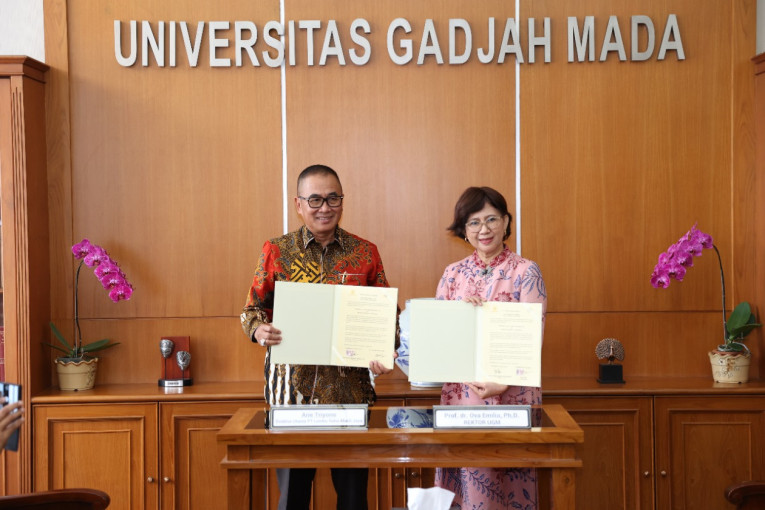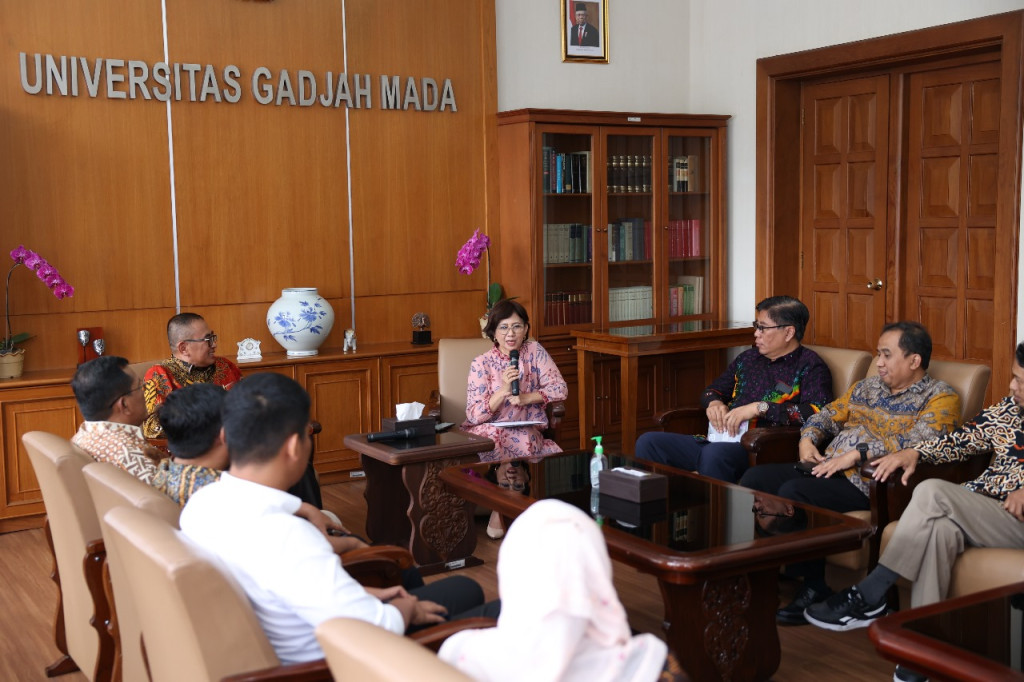
Universitas Gadjah Mada (UGM) and PT Lembu Setia Abadi Jaya have agreed to collaborate on utilizing 11,000 hectares of UGM-owned land in the Special Purpose Forest Area (KHDTK) in Blora, Central Java, and Ngawi, East Java.
The collaboration will involve several strategic stages, with participation from UGM, the Ministry of Agriculture, the Blora Regency Government, and the local community.
The Memorandum of Understanding (MoU) was signed by UGM Rector Professor Ova Emilia and PT LSAJ CEO Arie Triono on Friday (Oct. 11) at the UGM Central Office.
Rector Emilia welcomed the collaboration, emphasizing that Indonesia faces significant challenges regarding food security, particularly in animal protein.
“We thank you for trusting UGM. This is an opportunity for UGM to link and match with practitioners and industry to address future challenges,” she said.
She added that this collaboration aligns with UGM’s vision of becoming a Research and Development (RnD) hub for growing industries.
Rector Emilia announced the formation of a task force involving experts from various disciplines, including animal science, agriculture, and forestry.
“We are refreshing the previous Getas, Blora team, and now we involve colleagues from the Social Sciences and Humanities and Health sectors. I believe we can significantly impact with a humanistic approach like free medical care,” she explained.
Rector Emilia acknowledged that managing the 11,000 hectares of land in Getas, Blora, entrusted to UGM by the government, would be challenging for UGM alone.
However, the collaboration would benefit both institutions and the surrounding community. She confirmed that a Cooperation Agreement (PKS) detailing technical aspects would soon be drafted.
“We hope this partnership will yield positive results for all parties,” she concluded.

CEO Triono hoped collaboration with UGM would enhance PT LSAJ’s technological and innovation capabilities.
He also mentioned that PT LSAJ is currently a model for several provinces seeking to learn about upstream and downstream livestock management. PT LSAJ has even become an internship destination for students, including those from Universitas Brawijaya.
“In addition to meeting the Ministry of Agriculture’s target of producing 5,000 breeding cows, we also aim to build dormitories for students, farmers, breeders, or regional delegates who wish to learn at PT LSAJ,” said CEO Triono.
He further stated that PT LSAJ is ready to support the government’s new initiative to provide nutritious food for school children. To support this program, PT LSAJ will need assistance from the community around UGM’s Blora land to supply livestock feed.
“We plan to intercrop umami grass, pakchong, and odot,” he explained.
According to CEO Triono, these crops have great potential to increase farmers’ income, possibly exceeding the Blora minimum wage.
He assured that the grass production from the farmers would be purchased so farmers would not incur drying, transportation, or other expenses. This is expected to encourage community participation.
“What we’re about to do in Blora will be groundbreaking. The UGM team needs to be formed as soon as possible, as the Ministry of Agriculture expects the farm to be operational by December. We should start planting by mid-November,” CEO Triono concluded.
Author: Triya Andriyani
Photographer: Firsto
Post-editor: Afif

